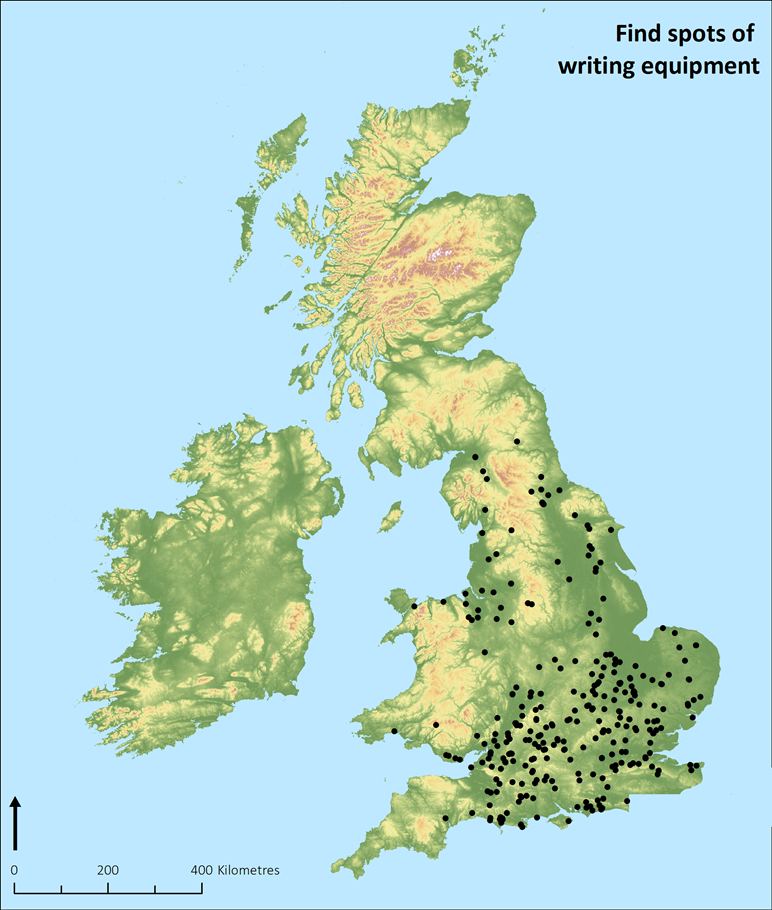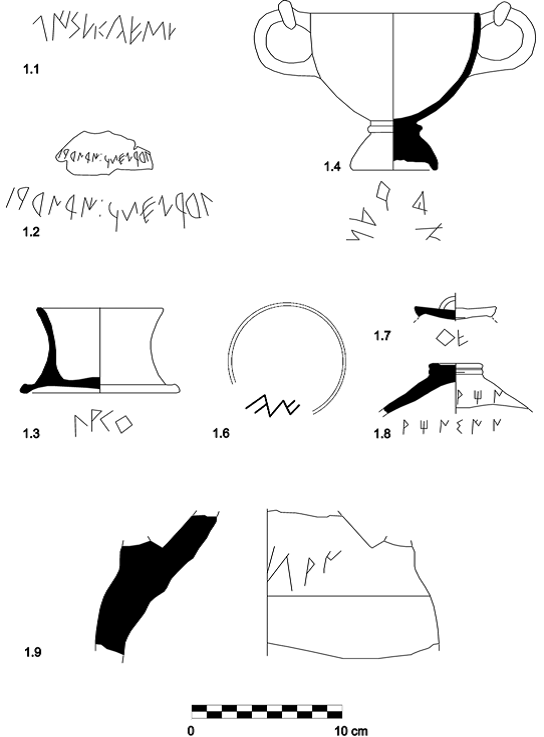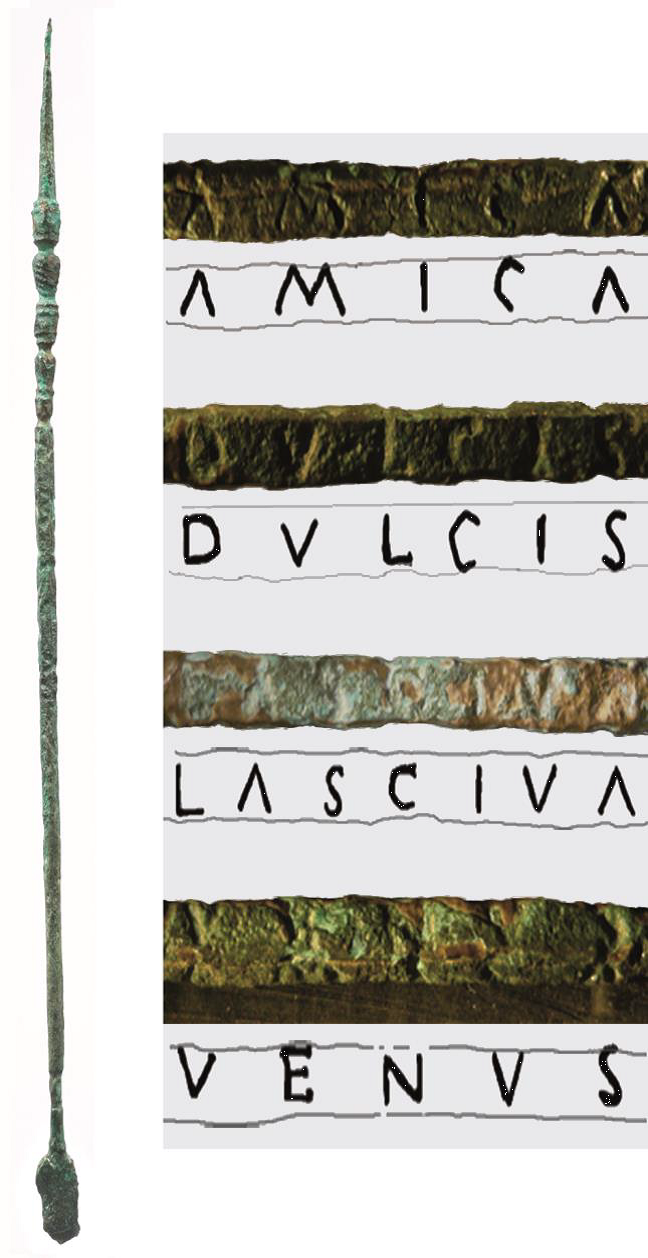I’m just starting to draw breath after a fun and busy few days in Edinburgh last week at the Roman Archaeology Conference (RAC). I’d relatively recently been in Edinburgh giving a keynote at an interesting conference on theorizing contacts in the Roman world, but that was in December and the darkness meant I hadn’t appreciated any of the striking topography and monuments that make Edinburgh so special. It’s a beautiful city! RAC was brilliantly run by Ben Russell and his colleagues and there were over 400 delegates from several different countries. It felt inclusive and international.
I was at RAC to run a panel on writing equipment for the LatinNow project. As part of our study of the Latinization of the north-western Roman provinces, we are looking at archaeological finds of writing equipment as a possible proxy for Latinization. I kicked off the session with a talk which outlined the exciting scope of what we hope to do and the depressing realities (issues of identification and interpretation of material, very patchy data etc.), before going into some detail on one of our provinces, Britannia, for which we can cautiously use some pretty impressive datasets, for example from the Portable Antiquities Scheme and the Rural Settlement of Roman Britain project. The results from the latter project underline the importance of road networks, status, urban centres, and the economy in the spread of literacy and Latin.

The second speaker was Javier Alonso from Mérida who presented both a global view of the Roman-period writing equipment from Hispania and a case-study from Emerita. His work over many years has tried to impress the importance of recognizing and publishing this material on archaeologists, museum staff and academics and shows what interesting work can be done if the material is carefully assessed in context. The third speaker was Oriol Olesti from Universitat Autònoma Barcelona who zoomed in on numerous sites in north-eastern Spain in the second and first centuries BC. The key messages from this paper were that the economy was an important driver in the uptake of literacy and that many sites, including those referred to as ‘Roman outposts’, with writing equipment seem to produce only Iberian graffiti in this period rather than Latin, which complicates the use of writing equipment as a proxy for Latinization in this area and period. I want to know more about this gap in the epigraphic record: is it ‘real’? LatinNow’s Noemí Moncunill, who was at RAC to present a poster created jointly with MJ Estarán Tolosa, will continue to work with Javier and Oriol as we try to understand the material from Hispania.

Next we moved east and heard from Sylvia Fünfschilling about the fascinating material from Augusta Raurica (Augst) in the context of Roman Switzerland. Sylvia impressed on us the large number of types of object that could be used for writing, some of which were beautiful, for example this inscribed stylus, which is similar to a find from the Bloomberg excavations.

Hella Eckardt from Reading discussed the various types of identities that may have been associated with writing equipment in the Roman world and looked particularly at the use and display of metal ink-wells across the Roman world. She highlighted the fact that writing equipment in graves of the very young could be aspirational rather than a reflection of what they had done in life. The next paper by Josy Luginbühl, Bern, followed on neatly and presented some of the material from her PhD thesis. We were treated to some intriguing examples of writing equipment deposited in Roman-period graves. Josy is interested in the fact that women are rarely directly identifiable as writers of our epigraphic materials, but appear in images with writing equipment and with this material in burial contexts. We look forward to hearing more as she continues her research! I think that more women in the Roman period are literate than we generally assume and LatinNow will be exploring this in more detail.
Colin Andrews of the Open University finished off the session with a close analysis of seal boxes, presenting the very latest finds and more evidence to back up his view that they were, in Roman Britain at least, and probably elsewhere, used to protect the seals that were used on the strings around bags which contained, e.g. money. In my view, though this means seal boxes cannot be taken as a direct proxy for literacy (we previously thought they sealed strings around stylus tablets), it does show the use of symbols and writing in administering the economic world, which, as it became increasingly complex in the Roman period, relied on literate systems for its control.

The LatinNow team is looking forward to continuing our collaboration with experts on writing equipment and is very grateful to all the speakers and the audience at RAC. We would also like to thank Alex Smith and Tom Brindle for help with the RSRB data, to Scott Vanderbilt and Michael Loy for maps and support, and to Lacey Wallace for help with PAS data.